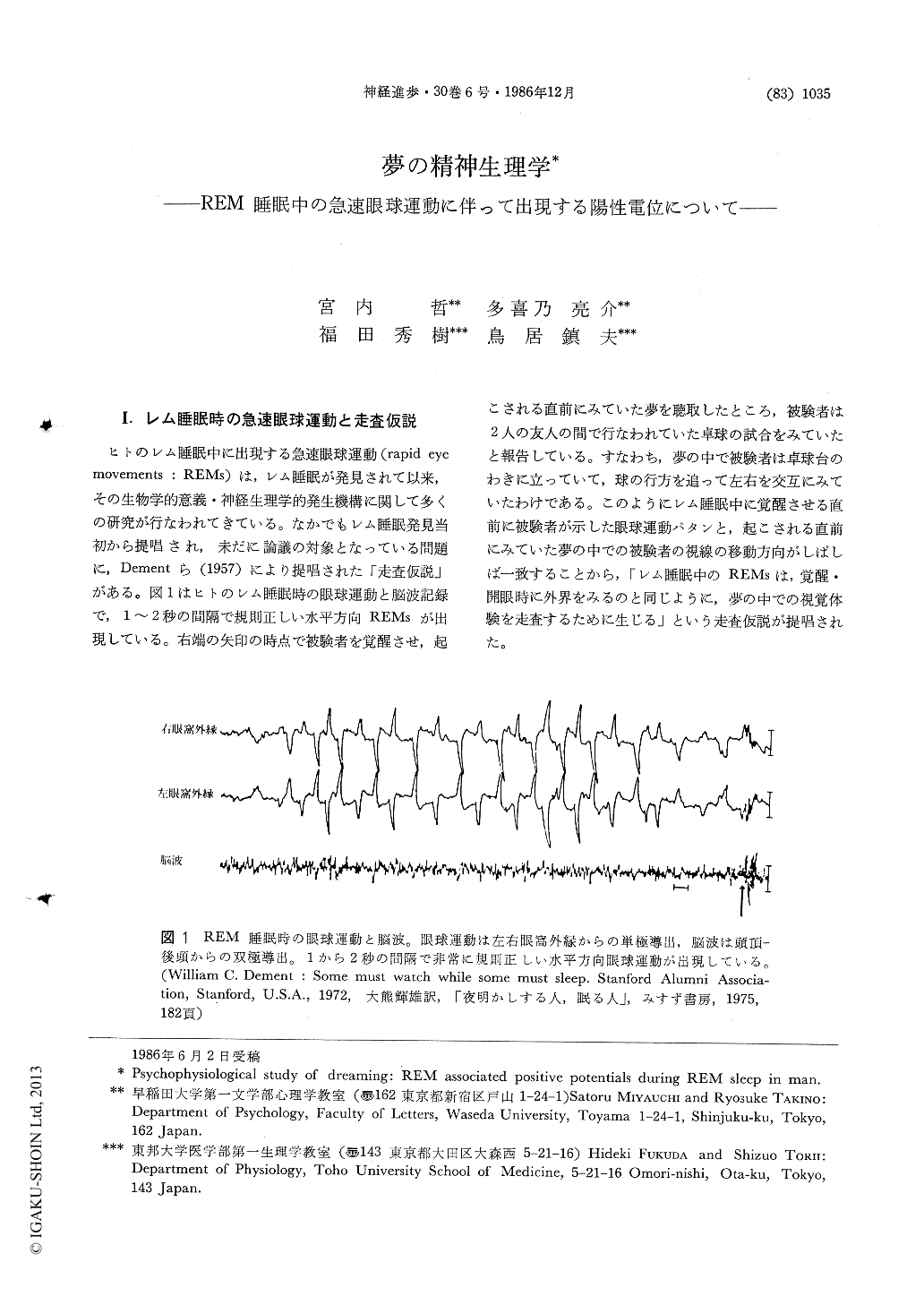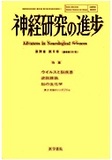Japanese
English
- 有料閲覧
- Abstract 文献概要
- 1ページ目 Look Inside
I.レム睡眠時の急速眼球運動と走査仮説
ヒトのレム睡眠中に出現する急速眼球運動(rapid eyemovements:REMs)は,レム睡眠が発見されて以来,その生物学的意義・神経生理学的発生機構に関して多くの研究が行なわれてきている。なかでもレム睡眠発見当初から提唱され,未だに論議の対象となっている問題に,Dementら(1957)により提唱された「走査仮説」がある。図1はヒトのレム睡眠時の眼球運動と脳波記録で,1〜2秒の間隔で規則正しい水平方向REMsが出現している。右端の矢印の時点で被験者を覚醒させ,起こされる直前にみていた夢を聴取したところ,被験者は2人の友人の間で行なわれていた卓球の試合をみていたと報告している。すなわち,夢の中で被験者は卓球台のわきに立っていて,球の行方を追って左右を交互にみていたわけである。このようにレム睡眠中に覚醒させる直前に被験者が示した眼球運動パタンと,起こされる直前にみていた夢の中での被験者の視線の移動方向がしばしば一致することから,「レム睡眠中のREMsは,覚醒・開眼時に外界をみるのと同じように,夢の中での視覚体験を走査するために生じる」という走査仮説が提唱された。
Following the discovery of REM sleep, the relationship between rapid eye movements (REMs) during REM sleep and dreaming has been discussed. Dement et al. (1957) propound the "scanning hypothesis"; the scanning of visual scenes in dreams cause rapid eye movements during REM sleep. Researches for and against the hypothesis were first reviewed, leading to the conclusion that many researchers are critical of the hypothesis because subjects lacking vision or visual experience also show REMs. Next, researches on eye movement related potentials (EM antecedent potential and lambda response) are referred to and it is suggested that the lambda response reflects visual information processing which is time locked to the offset of the eye movements.

Copyright © 1986, Igaku-Shoin Ltd. All rights reserved.


